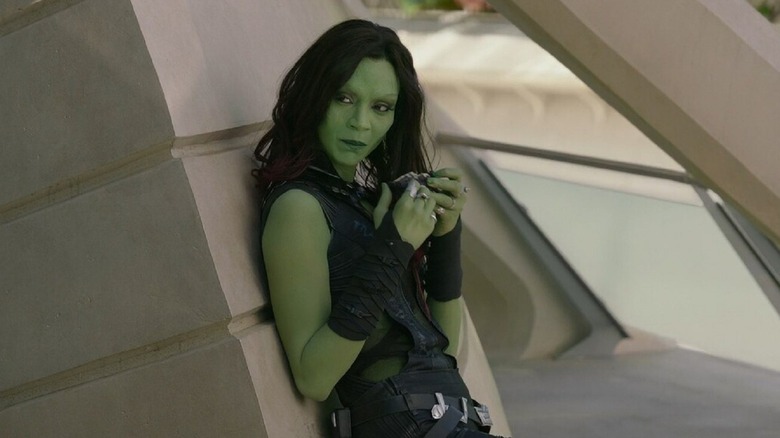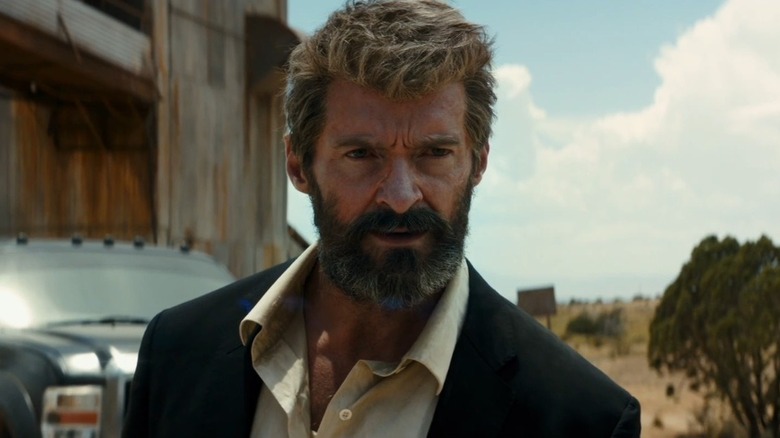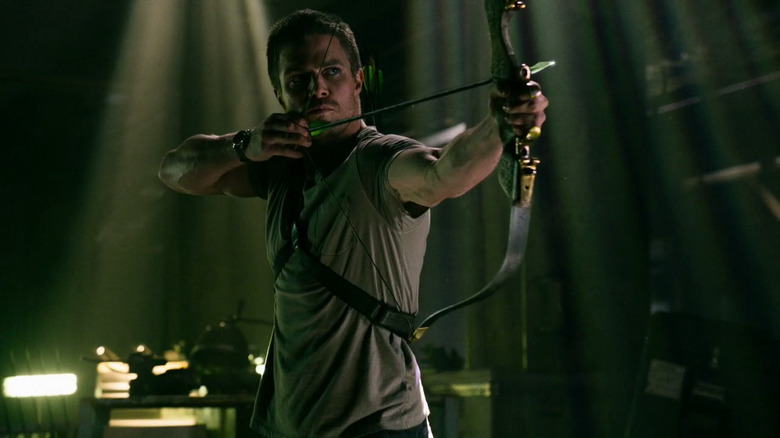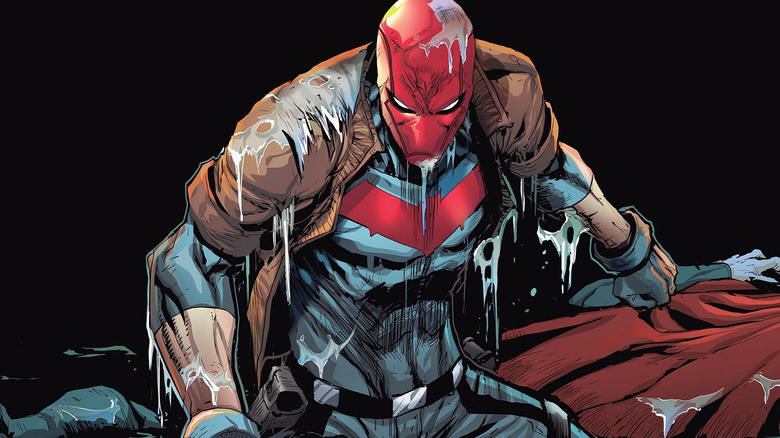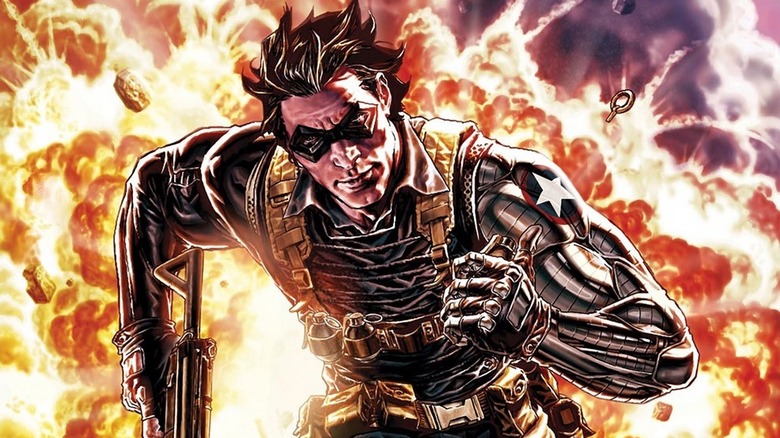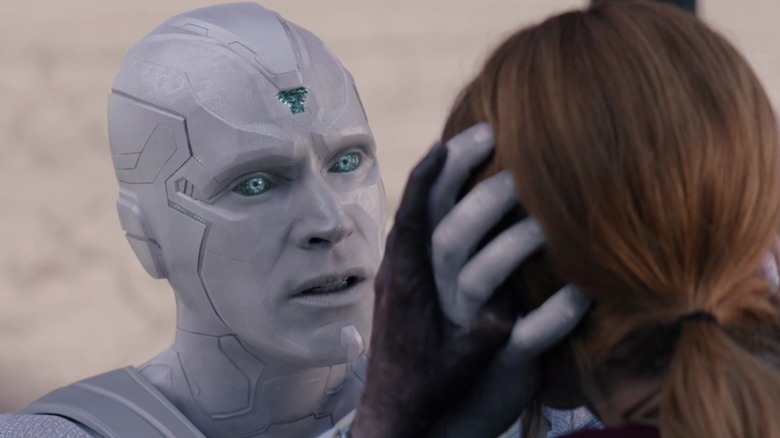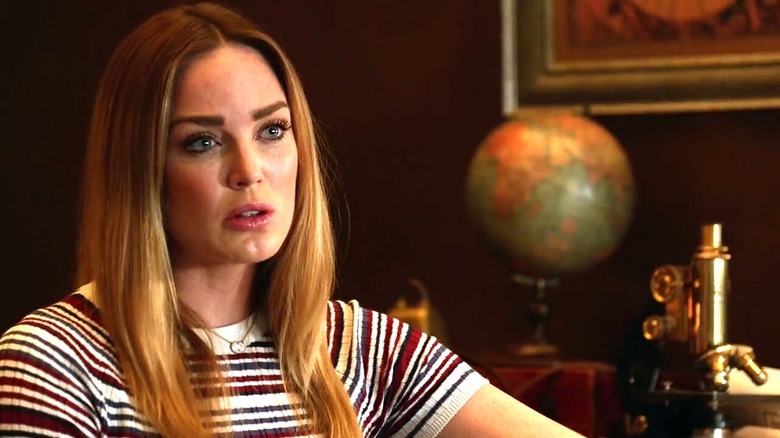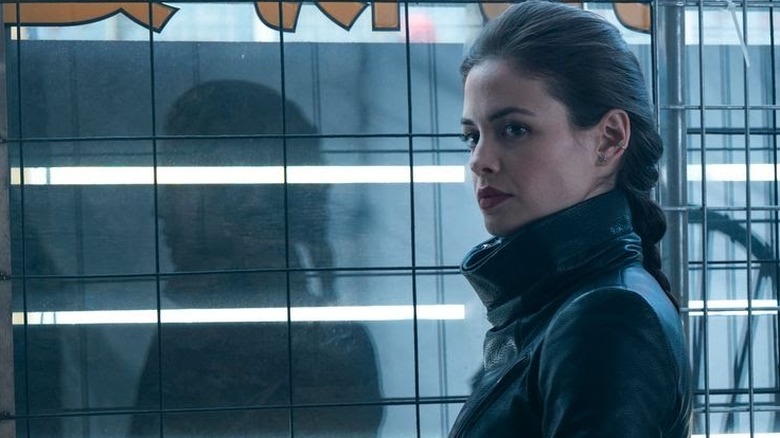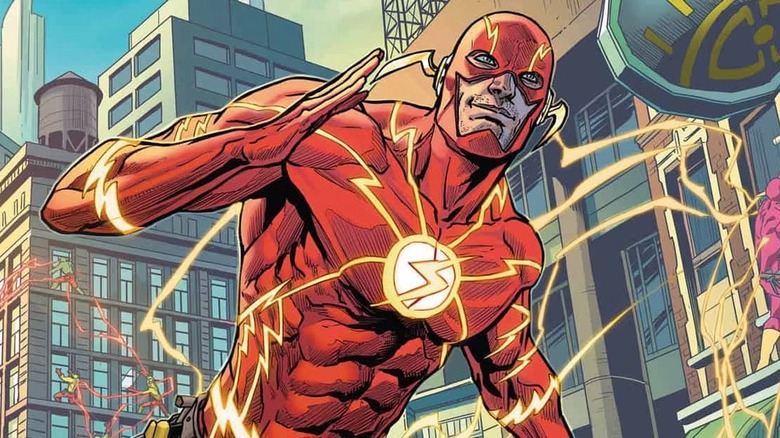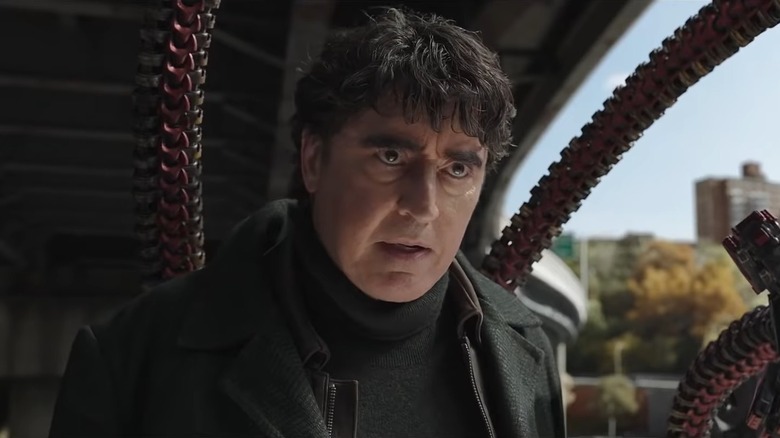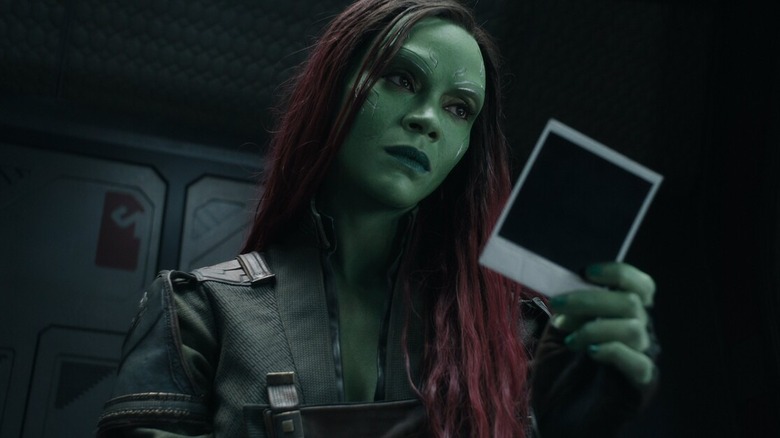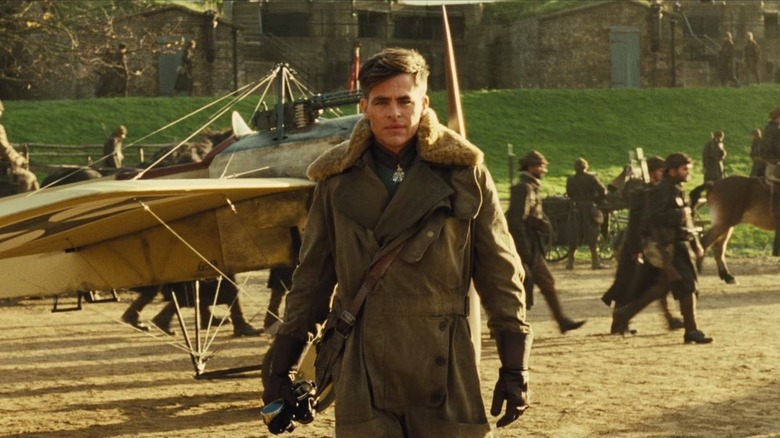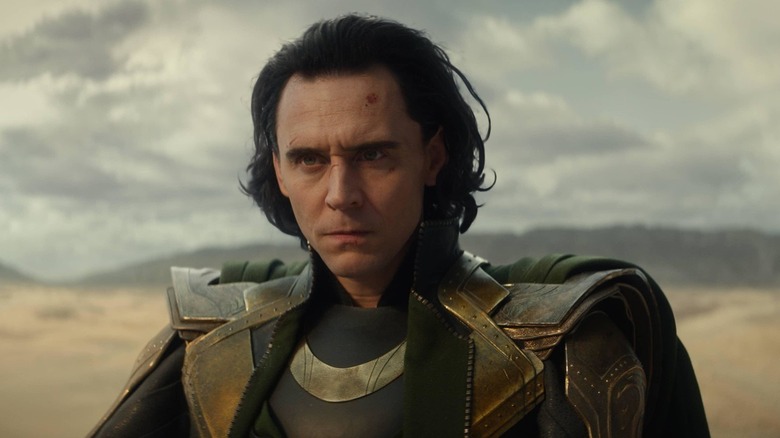Superhero Resurrections No One Saw Coming In The 21st Century
While some fans might disagree, superheroes and soap operas share several similarities. One of the biggest is how they treat the finality of death — or the lack thereof. Tears will be shed as the characters appear to have shuffled off this mortal coil, but the writers will inevitably find a way to bring them back later on. Whether it be through resurrections, alternate timelines, or some behind-the-scenes negotiations to offer the actors more money to return to the roles, superhero deaths are frankly about as permanent as rub-on tattoos.
Humanity in the 21st century might seem as though it is determined to find new and inventive ways to doom itself, but there have been a few bright sparks to make us smile. Superhero resurrections have allowed several beloved heroes to kick open the grave and dance like no one is watching again. Sure, Superman's revival in 2017's "Justice League" could be seen from a mile away — or maybe just by seeing Henry Cavill's name listed in the credits — but there have been other returns that caught fans off guard and seemed to come out of nowhere.
From Hugh Jackman's Wolverine surprising fans by sharpening his claws again to Loki using the multiverse to his advantage, let's take a look at the biggest 21st-century superhero resurrections that no one saw coming.
Wolverine
In 2017, "Logan" was set to mark the final time that Hugh Jackman would portray the sharp-clawed mutant after a staggering 17-year run. It wasn't a decision he took lightly either, as he discussed on "The Tonight Show Starring Jimmy Fallon." The Australian actor explained how he had spoken to Jerry Seinfeld, who gave him sage advice to call time on the role before it lost its creative spark.
Fans and pundits didn't want to accept it, though, and Jackman was pestered about the possibility of reprising the role for years thereafter. Politely, the actor would reiterate that his time was done — even when his frenemy Ryan Reynolds would constantly try to goad him into a Deadpool-Wolverine team-up.
So, imagine the surprise when Reynolds and Jackman confirmed that Wolverine would return for "Deadpool 3." The big question was, how would this be addressed since the character's fate at the end of "Logan" seemed pretty final? This was quickly explained away by the fact "Deadpool 3" will take place earlier in the timeline than "Logan." At this point, you have to wonder how long it'll be before Marvel Studios bring back the rest of the original "X-Men" cast from the Fox movies to reprise their roles in the Marvel Cinematic Universe, regardless of whether they're alive or dead.
Green Arrow
The Arrowverse has never been shy of fakeouts and dramatic cliffhangers, and there are a number of times in the eight-season run of "Arrow" when it appears that Oliver Queen aka Green Arrow is done for good. But the character seems to have a knack for cheating death multiple times over.
In Season 8, Oliver did travel to the other side for what seemed the final time. During the "Crisis on Infinite Earths" event, he utilizes the powers of the Spectre to save the multiverse and sacrifices himself. It's a heroic and fitting end to the Emerald Archer, but perhaps an expected one since this was the series' final season. During a Facebook Live session, actor Stephen Amell revealed he had wanted to leave the show earlier, but had stayed on. However, now it was time for him to close the chapter on Green Arrow and focus on his family life and other professional commitments.
This wasn't to be the end, however, and "The Flash" Season 9, Episode 9 — titled "It's My Party and I'll Die If I Want To" – unexpectedly brought Green Arrow back for a last rodeo. The episode sees Barry Allen finding himself in purgatory where he meets Oliver again, and the two team up to restore the balance of the multiverse before Oliver says goodbye again. But is it really the final time? We'll have to wait and see.
Jason Todd
Comic book fans can be a ruthless bunch — especially when considering how they voted for DC to kill off Jason Todd in 1988's "A Death in the Family" storyline by Jim Starlin and Jim Aparo. The publisher posed the question to fans: Should the second Boy Wonder survive or not after the Joker left him in an explosion? In the end, 10,614 votes were cast (per Newsarama) and it was a slim margin of 72 votes that decided Todd's fate.
Todd never had the popularity level of his predecessor, Dick Grayson, and when Tim Drake was introduced as the new Robin, fans all but forgot about Todd's time as Batman's right-hand man. However, in 2003, the "Hush" storyline — by Jeph Loeb and Jim Lee — started to test the waters, as Clayface bore the likeness of Todd in a subtle tease to see how the audience would react.
Then, in 2005's "Under the Red Hood" arc — by Judd Winick and Doug Mahnke — Todd returns as the villainous vigilante, Red Hood. It was an unexpected moment in the comics, but it also gave Todd the rebirth he required in the DC Universe. Red Hood has gone on to become a popular antihero — in the same vein as the Punisher — and even appeared as a playable character in 2022's "Gotham Knights" video game.
Bucky Barnes
When it comes to comic book characters that stayed dead for the longest time — making their returns even more unlikely — then Bucky Barnes is certainly up there. In 1963's "The Avengers" #4 — by Stan Lee and Jack Kirby — Captain America tells Earth's Mightiest Heroes that Bucky is gone, and fans also believed it to be true. Cap's best friend is said to have perished in the war, and Marvel did an excellent job keeping him out of continuity for the longest time. Of course, there are flashback stories in which he makes an appearance, but for all intents and purposes, Bucky is no more.
In 2005's "Captain America" #6 — by Ed Brubaker and Steve Epting — Bucky returns as the brainwashed Winter Soldier, who survived the events from before. It's a shocking twist no one could have predicted, as Marvel revived a character that had been gone for 40 years. Eventually, Bucky turns back to being a hero and even becomes Captain America at a later point.
The MCU takes inspiration from the comics in its treatment of Bucky as well. The character is presumed gone in 2011's "Captain America: The First Avenger" only to return three years later in "Captain America: The Winter Soldier."
Vision
Poor Vision has had to go a few rounds with the grim reaper in the MCU, putting fans through the proverbial emotional meat grinder several times over. In "Avengers: Infinity War," Vision gets offed — not once but twice. His beloved Wanda Maximoff zaps him to prevent Thanos from taking the Mind Stone, only for the Mad Titan to reverse time and rip the stone out of Vision's head and destroy him once again.
When news of "WandaVision" broke and everyone saw actor Paul Bettany back as Vision, most fans presumed this was all due to Wanda processing her grief and him appearing in her created reality in the cordoned-off section of Westview known as the Hex. However, the Disney+ show made Mary Shelley's "Frankenstein" seem like a children's story, as Vision's actual corpse is reanimated using magic and weaponized to stop Wanda. There's a standoff between the Hex's version of Vision and the reanimated White Vision, with the latter receiving the original Vision's memories and flying off into who-knows-where.
Bettany doesn't believe he's done as the character either, telling Entertainment Weekly: "At the end of WandaVision, you see Vision fly off and that's a loose end. And Kevin Feige is a man who doesn't really allow loose ends. So I assume at some point I will be putting on my tights and cloak for another outing, but I don't know when that might be."
White Canary
Sara Lance had a rough time in "Arrow" from the get-go. She is on the Queen's Gambit yacht when it sinks — an event that sets Oliver Queen on the path to becoming the Green Arrow — and it is presumed that she didn't survive the tragedy. In Season 2, however, Sara returns as the vigilante known as the White Canary and the audience learns she survived all those years earlier and was trained by the League of Assassins.
At this point, life seems to be back on track for Sara, as she reconnects with her father, Quentin, and sister, Laurel. Then, in Season 3, she gets nailed with several arrows to the chest and passes away. That must be it for her, right? Well, not exactly.
In Season 4, Laurel puts her sister in the Lazarus Pit and revives her. There are some complications with her resurrection in the beginning, but she eventually gets back to her normal self once her soul is restored. Honestly, she should scrap the name White Canary and consider using Die Hard as a mantle instead.
Wonder Girl
Donna Troy, aka Wonder Girl, appears in the first season of "Titans" but she becomes a central character in Season 2 when she helps Dick Grayson and the other young heroes against the likes of Deathstroke and Cadmus Laboratories. She also proves her heroism by sacrificing her life to stop a transmission tower from falling on a group of civilians. While she is successful in saving innocent lives, she is electrocuted to death, because apparently an Amazon's power doesn't extend to combating livewire energy.
Yet, the Titans have the secret power of necromancy in their midst — thanks to Raven — and the young hero tries to figure out a way to bring Donna back from the dead. Viewers discover that Donna is helping out in the afterlife, keeping Tim Drake safe from danger and trying to get him back to the land of the living. Eventually, she is revived and returns to her hero duties. Afterward, she realizes she can actually do more good without the tights and embarks on a new path in her life.
Barry Allen
There's a generation of comic book fans who don't consider Barry Allen as the Flash, and many kids born in the '80s and '90s are only familiar with Wally West as the Scarlet Speedster. The reason for this is simple: Barry goes to the great big Speed Force in the sky in 1985's "Crisis on Infinite Earths" event — by Marv Wolfman and George Pérez. From there, fans accepted Wally as the new Flash, and Barry was considered a part of the character's history in much the same way as his own predecessor, Jay Garrick, was.
Or so we thought. In 2006's "Infinite Crisis" #4 — by Geoff Johns, Phil Jimenez, Ivan Reis, and Pérez — Barry races out of the Speed Force to assist the other heroes. However, he only made his full return to the DC Universe during the events of "Final Crisis" in 2008.
On his website, Wolfman revealed he wasn't a fan of putting Barry on ice, writing: "Please note that I didn't think it was a good idea to kill the Flash but those were my marching orders, so I did the best I could to make his death as moving as I could."
Doctor Octopus
In 2004's "Spider-Man 2," Doctor Otto Octavius is a brilliant scientist who specializes in fusion power. However, an experiment goes awfully wrong, killing his wife and binding a harness featuring robotic tentacles to his body. Octavius never recovers from this incident, deciding he wants to try the experiment again and becoming the criminal known as Doctor Octopus in the process. In the end, though, Peter Parker helps him see reason, and Doc Ock sacrifices himself to stop his experiment from causing greater harm.
It's safe to say that there is a redemption arc here, however, "Spider-Man: No Way Home" brings him back for the multiversal adventure. This version of Doc Ock once again saves the day and helps the Spider-Men, showing how there's ultimately good that resides within the doctor.
Appearing on the "Household Faces" podcast (via People), actor Alfred Molina explained how he believes "No Way Home" is actually the right closing chapter for his character. "What makes this movie interesting and different from the previous one is that here we see the full redemption of Doc Ock, which makes me think that they may be putting him to bed," he said.
Gamora
It isn't hyperbolic to say that Gamora's death is the major catalyst of "Avengers: Infinity War." When Thanos sacrifices his daughter so he can gain the Soul Stone, it sets off a chain of events that implicates not just this movie, but the next one as well. Gamora's traumatized and outraged boyfriend, Peter Quill, doesn't see reason and reacts in anger towards Thanos. His impulsive actions mean that the heroes aren't able to prevent the Mad Titan from collecting all the Infinity Stones, and they fail to stop the deadly snap before it happens. If Gamora had never died, it's likely Peter would have approached the situation differently.
Considering a lot of heroes fell in "Infinity War" and it signaled the end of some of the actors' time in the MCU, many fans believed this would be the last they would see Gamora. However, an alternate, earlier version of her appears in the time-traveling shenanigans of "Avengers: Endgame." She isn't as connected to the Guardians as the version of her who perished in "Infinity War," but she ends up doing the right thing and siding with the heroes — both in "Endgame" and "Guardians of the Galaxy Vol. 3." While Gamora's death in "Infinity War" is still a powerful moment, it does cheapen the impact slightly since a variant of the character pops right back up in the next movie.
Steve Trevor
Considering Steve Trevor's importance to the Wonder Woman lore, it's surprising that the decision was taken to end his time in the DC Extended Universe so quickly. In 2017's "Wonder Woman," Steve sacrifices himself by flying off in a plane filled with poison and detonating it. It's a moment that doesn't only hit right in the feels — it mule kicks. Every audience member experiences Diana's hollow pain, but there's also the realization that he did what he needed to for the good of the world.
"Wonder Woman 1984" takes place decades later, and viewers might be shocked to see that Steve is back. However, he's not technically back — Diana is utilizing the Dreamstone to wish him back to life, albeit in the body of another man. It's all a little weird since this other dude is essentially being puppeteered by some kind of poltergeist version of Steve, making it sound less like a "Wonder Woman" movie and more like "The Exorcist." Steve's peculiar resurrection is only temporary, however, as Diana renounces her wish to regain the power to battle Max Lord and Cheetah. If they've brought him back once, it shouldn't be ruled out that they'd bring him back again.
Loki
As the God of Mischief, Loki is a character that deals in deceit. He has tricked fans so many times over, that no one ever believes he has gone — however convincing his death might seem. That being said, "Avengers: Infinity War" makes it seem final with an emotionally poignant scene right at the beginning of the film. After Loki makes a bold stand against Thanos, he has his neck snapped by the Mad Titan and it looks like this will be the end for Thor's mischievous brother.
Viewers thought this would be the end for the character since actor Tom Hiddleston had been a part of the MCU since 2011's "Thor," and it was always likely that his time in the franchise would be up sometime. However, "Avengers: Endgame," pulls out the time-travel card and the 2012 variant of Loki gets a hold of the Tesseract and creates a new timeline.
The story continues in the "Loki" TV series, as this variant is now alive and meets plenty of other variations of Loki in the multiverse. Much like Gamora, it does feel like a superhero resurrection that's almost too easy. To make a counterpoint, though, fans would never have experienced the glorious Alligator Loki if this hadn't happened.
